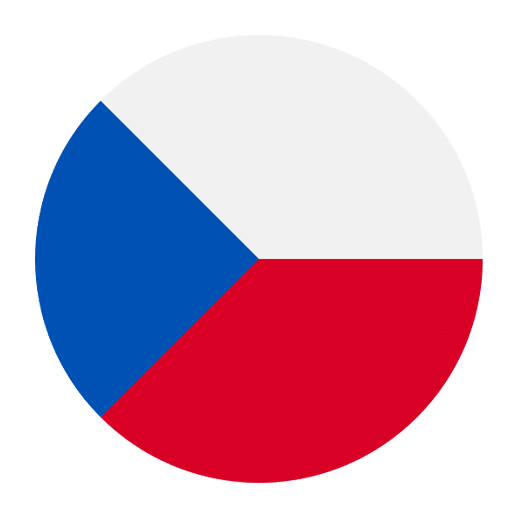When traveling to the Czech Republic, you will encounter a variety of public signs and notices that are essential for navigating daily life. Understanding these signs can significantly enhance your travel experience and ensure that you adhere to local customs and regulations. This article aims to provide an in-depth guide to understanding Czech public signs and notices, focusing on commonly seen terms and their meanings.
Basic Vocabulary for Public Signs
Before diving into specific signs, it’s useful to familiarize yourself with some basic Czech vocabulary that frequently appears on public notices.
Vchod – Entrance
Východ – Exit
Otevřeno – Open
Zavřeno – Closed
Vstup zakázán – No Entry
Volný – Free
Obsazeno – Occupied
WC – Toilet
Toaleta – Toilet
Pozor – Attention/Caution
Zákaz kouření – No Smoking
Jízdní řád – Timetable
Informace – Information
Pokladna – Cashier/Ticket Office
Recepce – Reception
Odjezd – Departure
Příjezd – Arrival
Transportation Signs
Transportation is a vital aspect of any trip, and understanding public transportation signs in Czech can make your travel much smoother.
Metro and Tram
In Prague, the metro and tram systems are extensive and well-marked. Key signs include:
Vstup do metra – Entrance to the Metro
Nástupiště – Platform
Směr – Direction
Jízdenky – Tickets
Konečná stanice – Final Station
Přestup – Transfer/Change
Jízdenky a pokuty – Tickets and Penalties (indicating where you can buy tickets and the fines for not having one)
Bus and Train
For buses and trains, you will see signs like:
Autobusová zastávka – Bus Stop
Autobusové nádraží – Bus Station
Nádraží – Train Station
Jízdní řád – Timetable
Příjezd – Arrival
Odjezd – Departure
Safety and Warning Signs
Public safety is paramount, and you’ll find various signs ensuring that you follow safety protocols.
Pozor! Kluzká podlaha – Caution! Slippery Floor
Nehas vodou – Do Not Use Water (often seen near electrical equipment)
Pozor! Horký povrch – Caution! Hot Surface
Nouzový východ – Emergency Exit
Úniková cesta – Escape Route
Public Facility Signs
When visiting public facilities like museums, parks, and libraries, you will come across several important signs.
Vstupné – Admission Fee
Pokladna – Ticket Office
Informace – Information
Recepce – Reception
Otevírací doba – Opening Hours
Vstup zakázán – No Entry
Fotografování zakázáno – No Photography
Prosíme, nerušit – Please Do Not Disturb
Bezpečnostní kontrola – Security Check
Dining and Retail Signs
When dining out or shopping, these signs will help you understand the services and rules.
Otevřeno – Open
Zavřeno – Closed
Vstup – Entrance
Výstup – Exit
WC – Toilet
Toaleta – Toilet
Kuřácká zóna – Smoking Area
Nekuřácká zóna – Non-Smoking Area
Pokladna – Cash Register
Sleva – Discount
Výprodej – Sale
Hotel and Accommodation Signs
Staying in hotels or other accommodations will require you to understand a few more specific signs.
Recepce – Reception
Pokoj – Room
Karta – Card (often referring to key card)
Výtahem – Elevator
Schodiště – Stairs
Úklid – Cleaning
Volný – Vacant
Obsazeno – Occupied
Check-in – Check-in
Check-out – Check-out
Healthcare and Emergency Signs
In case of emergencies or medical needs, knowing these signs can be crucial.
Nemocnice – Hospital
Lékárna – Pharmacy
Ordinace – Doctor’s Office
Pohotovost – Emergency Room
Záchranka – Ambulance
První pomoc – First Aid
Vstup zakázán – No Entry (often seen in restricted hospital areas)
Regulatory and Prohibitory Signs
These signs are essential for following local laws and regulations.
Zákaz vstupu – No Entry
Zákaz kouření – No Smoking
Zákaz fotografování – No Photography
Zákaz parkování – No Parking
Zákaz vstupu se psy – No Dogs Allowed
Zákaz používání mobilních telefonů – No Mobile Phones Allowed
Miscellaneous Useful Signs
Finally, here are some miscellaneous signs you might find useful.
Informace – Information
Mapa – Map
Telefon – Telephone
Internet zdarma – Free Internet
Wi-Fi – Wi-Fi
Ztráty a nálezy – Lost and Found
Sprchy – Showers
Šatna – Cloakroom
Tips for Reading Czech Signs
Context is Key: Sometimes the surrounding context can help you deduce the meaning of a sign. For example, if you see “Vstup zakázán” near a construction site, it means “No Entry.”
Look for International Symbols: Many signs also include universal symbols that can help you understand their meaning even if you don’t know the Czech words.
Practice Common Phrases: Familiarize yourself with the most common phrases you will encounter. This will make it easier to recognize and understand signs quickly.
Use Translation Apps: If you are unsure about a particular sign, translation apps can be very useful. Many of these apps now include camera features that can translate text in real-time.
Ask Locals: Don’t hesitate to ask locals for help. Most Czechs are friendly and willing to assist tourists.
Conclusion
Understanding Czech public signs and notices is not just about language; it’s also about ensuring a safe and enjoyable trip. By familiarizing yourself with common terms and their meanings, you can navigate public spaces more efficiently and adhere to local regulations. Whether you are using public transport, dining out, or visiting a museum, these signs will guide you and make your experience in the Czech Republic much more pleasant. So, take some time to learn these signs, and enjoy your travels with confidence!

